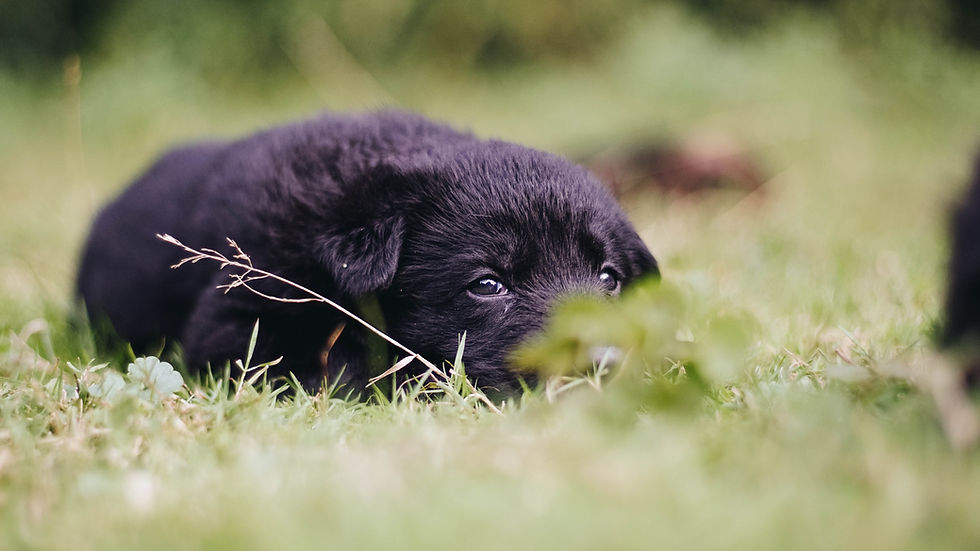How to crate train a puppy...
- TMS K-9 Connections

- Jan 6, 2020
- 3 min read

Crate training your puppy is one of the first and most important trainings you'll be doing with your new pup! Puppies can get themselves into a lot of trouble, primarily because they don't yet understand many of the rules that come with living in a home with humans. It's important that you teach your puppy to enjoy and respect their time in the crate so that if you ever need them to be contained for a certain amount of time, whether that is while you are gone or to keep them out of something that could be harmful or stressful for them.
Dogs in the wild seek out dens, or places that are confined where they feel safe. Our goal in crate training is to simulate a den for your pup to feel safe in whether they are choosing to be in there or, you put them in the crate for a certain amount of time. Puppies also feel much less overwhelmed by a small crate where they feel is their space, rather than a big house that is new to them and may be somewhat scary.
Step 1: Choosing the right crate
We suggest you choose a well-ventilated crate that is large enough for your puppy to stand up, lie down, and turn around. You don't want your crate to be too small, as that will be uncomfortable for your dog, but you also don't want it to be too big, where they may be able to establish habits of having accidents in the crate without ruining the bedding they need to lay on. Remember that your pup's crate will need to grow with them, so consider getting a large crate that will fit them as an adult, and purchasing a divider to help them slowly ease into their full size crate.
Step 2: Teach your puppy to love it's crate
It's important that your puppy does not associate it's crate with punishment, but instead as a place it goes to feel safe and be out of the way. Make sure you start by providing a comfortable and well padded bed or blanket for your pup to lay on and have a couple toys that your puppy loves to chew on in the crate with them. Start with ten minute naps or "wind-down" times after play time or adventures so your puppy learns that. their crate is a place to sleep and relax. It can be helpful to keep your puppy in the crate at night, but expect that just like a baby, they will cry a bit. Keeping them in a crate in your bedroom can help ease some of their initial separation anxiety, but know that to a certain extent they need to learn to self soothe.
Step 3: Potty train your puppy
It is VERY important that you take your puppy to eliminate immediately after letting them out of their crate. Hook them into their harness or collar and walk them to their designated "potty area". Use your bathroom time commands and give them plenty of time to go. For more information about potty training check out our free potty training course here.
Crate training is something that takes patience and love. Try not to get frustrated with your pup and avoid using the crate as punishment, especially in the beginning. You want your pup to look forward to crate time so that you can use it as a tool to support their behavioral success in the future.




Comments